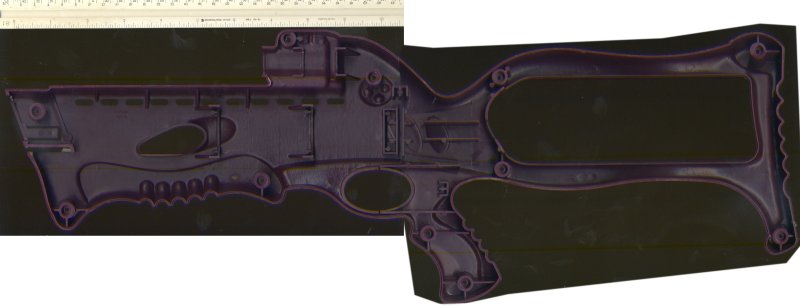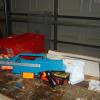This is still a work in progress. This isn't a laser-scan and I only just started the internal features, but I do have the exterior as done as it can be without having access to more expensive equipment.
The goofy process used is to scan the inside of the shell using a flatbed scanner.

This is two and a half scans stitched together with the ruler in each of the scans to confirm scaling and orientation. The scanner does add some optical distortion so that overall dimensions have to be checked against the shell.
The scan can then be loaded into drawing mode in Solid CAD software and traced. Those flat traces can be used to extrude out a solid model version of the shell. Alternatively the features that you want to copy could be filled in black and saved as a 2-color image and software such as Inkscape could convert that image into a DXF file, though that process can be kind of annoying and the DXF it makes can sometimes be kind of messy.
Anyway, I copied the outlines of all the features into a part and modeled all the exterior features. And after 3 hours of doing that I have this.

So this is only likely to be a 93% accurate reproduction of the original shell and there are some features I'm going to drop (such as the bow arm attachment feature which nobody will use). A more accurate model would require an alternate method such as a CMM. We have one at work now but I'm still being trained how to use it. This model also doesn't require extreme precision since I can use the 100% accurate models I made of the rest of the parts to error correct all the internal features while modeling them.
The next step is to copy all of the internal features such as cross-members, posts, part cutouts, and then the inside contour of the shell. These all have to be modeled as separate parts to keep the file sizes down. They can later be merged together with boolean operations either in the CAD software or externally as STL files using Blender.
The little critters of nature, they don't know that they're ugly. That's very funny, a fly marrying a bumble bee. I told you I'd shoot, but you didn't believe me. Why didn't you believe me?



















